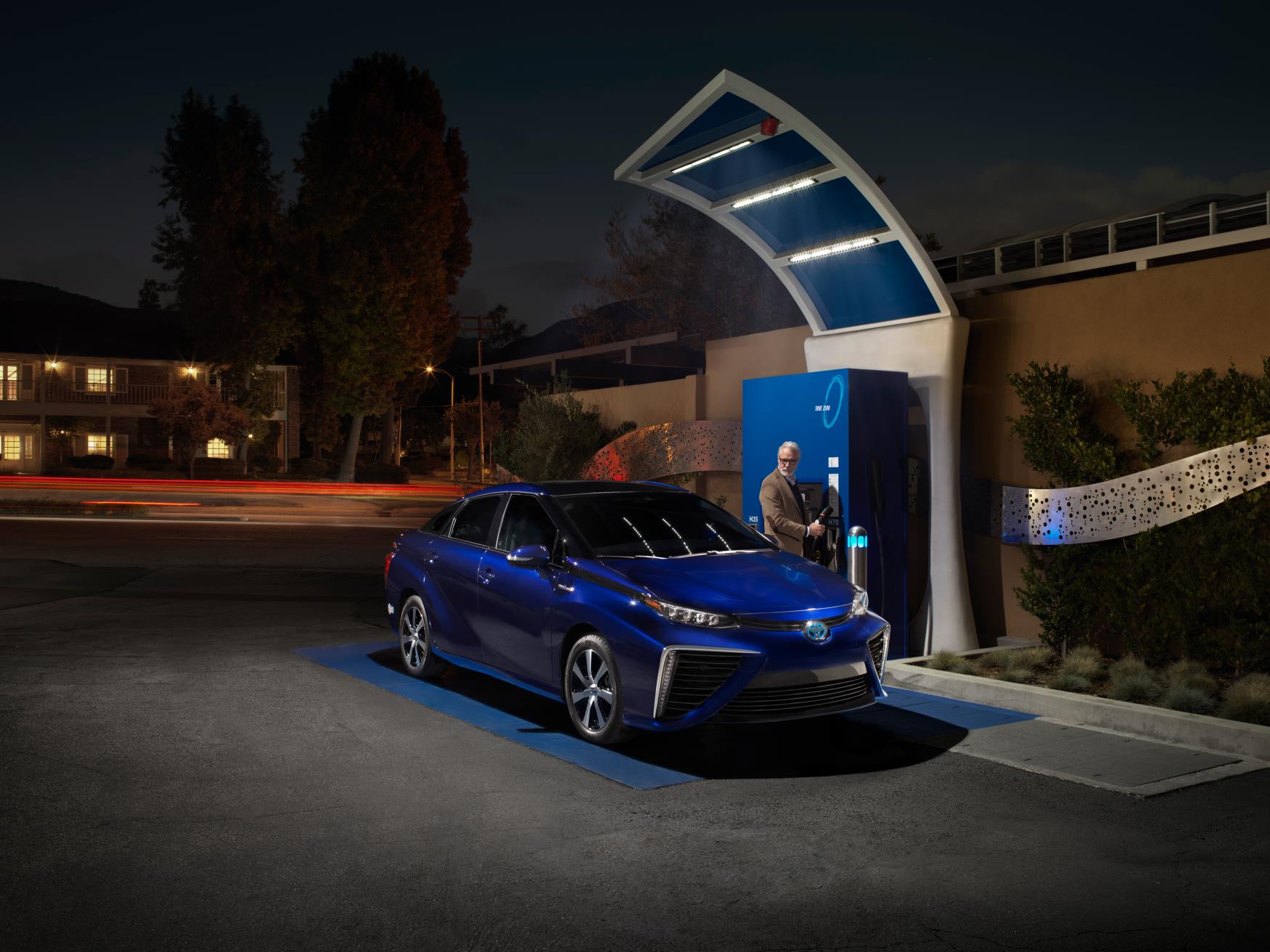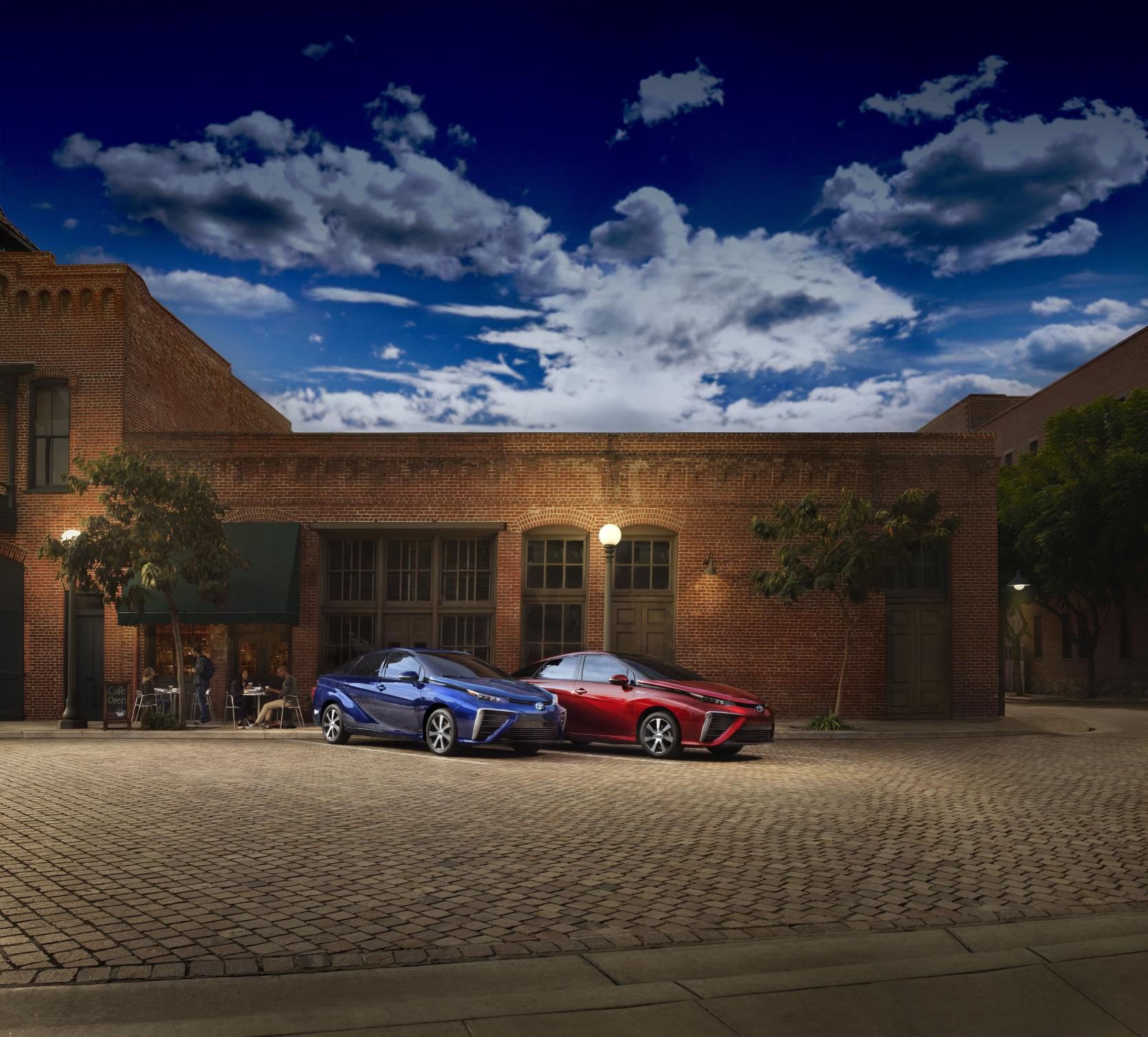Hydrogen is going the distance: Toyota surpasses 3,000 Hirai Hydrogen Fuel Cell Vehicle sales in California
; Date: January 23, 2018
Tags: Toyota

PLANO, Texas, January 23, 2018 – Move over polluters, the Toyota Mirai, one of the world’s first mass-produced hydrogen fuel cell electric vehicles, has surpassed 3,000 sales in the Golden State. Having reached this new milestone, Mirai make up more than 80% of all hydrogen fuel cell vehicles in the United States.
“Toyota remains at the forefront of developing and deploying hydrogen fuel cell technology, and we believe strongly in its potential to help realize a more sustainable and zero-emissions society,” said Bob Carter, Executive Vice President, Toyota Motor North America, Inc. “From our success in launching the Mirai to our work in building the world’s first megawatt-scale carbonate fuel cell power generation plant, Toyota is proud to bring to market new uses for this versatile technology.”
The Toyota Mirai, a four-door, mid-size sedan, is a zero-emission hydrogen vehicle with an EPA estimated driving range rating of 312 miles and 67 mpge city/highway/combined. Its performance fully competes with traditional internal combustion engines – but uses no gasoline. With a refueling time of approximately five minutes, the Mirai creates electricity using hydrogen, oxygen and a fuel cell, and emits nothing but water vapor in the process.
Toyota continues its work to build a hydrogen society and remains committed to supporting the development of a hydrogen refueling network.Thirty-one retail hydrogen stations are now open for business in California, with an additional twelve stations projected to open in California in 2018. Toyota continues to partner with FirstElement Fuels and Shell to support the creation of a broad network of hydrogen infrastructure in California. Toyota is also collaborating with Air Liquide, a producer of industrial gases, to set up a network of 12 hydrogen fueling stations stretching from New York to Boston, with the first station expected to launch in Boston later this year.

In addition, Toyota is building a new Tri-Gen facility at the Port of Long Beach that will use bio-waste sourced from California’s agricultural industry to generate water, electricity and hydrogen. The hydrogen will fuel all Toyota fuel cell vehicles moving through the Port, including new deliveries of the Mirai sedan and Toyota’s Heavy Duty hydrogen fuel cell class 8 truck, known as Project Portal. Looking ahead, Toyota has also established a range of partnerships with both private and public entities as well as academic institutions to further accelerate its vision of a hydrogen based future.
Toyota (NYSE:TM) has been a part of the cultural fabric in the U.S. and North America for 60 years, and is committed to advancing sustainable, next-generation mobility through our Toyota and Lexus brands. During that time, Toyota has created a tremendous value chain as our teams have contributed to world-class design, engineering, and assembly of more than 33 million cars and trucks in North America, where we operate 14 manufacturing plants (10 in the U.S.) and directly employ more than 46,000 people (more than 36,000 in the U.S.). Our 1,800 North American dealerships (nearly 1,500 in the U.S.) sold more than 2.6 million cars and trucks (2.4 million in the U.S.) in 2017 – and about 85 percent of all Toyota vehicles sold over the past 15 years are still on the road today.
Toyota partners with community, civic, academic, and governmental organizations to address our society’s most pressing mobility challenges. We share company resources and extensive know-how to support non-profits to help expand their ability to assist more people move more places. For more information about Toyota, visit
www.toyotanewsroom.com.

